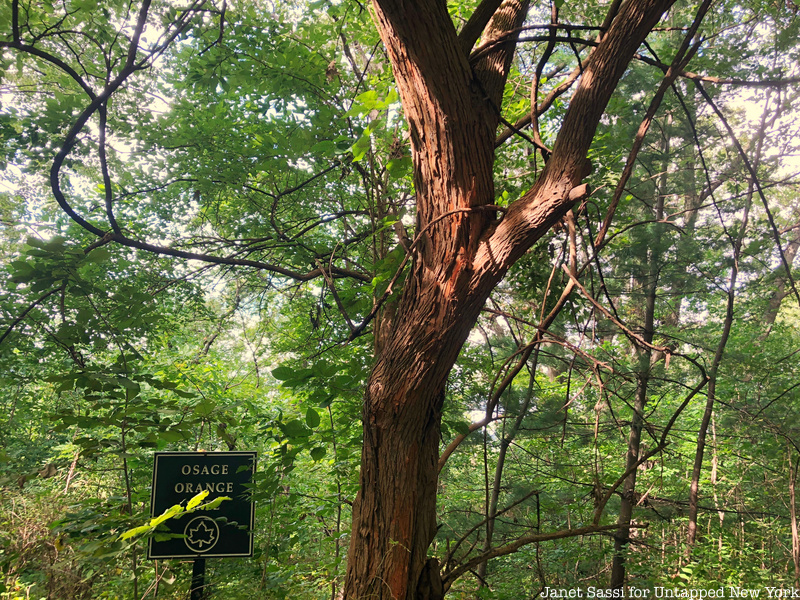7. Orange Osage tree

Another remnant from the days when estates existed in the forest, the Orange Osage was used to demark estate property lines, and its “umbrella shape” and thorns made it useful for penning cattle, says Baisley. It was native to the American Southeast, and the Osage tribe used its deeply curved, strong limbs to make bows and arrows. Its “orange” name derives from the slight rust color of the wood — used to tan leather — as well as the citrusy smell of the baseball-sized, bright green fruit.
“Visitors always ask what the neon green balls are, but nobody eats them,” says Baisley. “Every squirrel will try them — just once.” Yet at one time, Baisley says, macedons and mammoths loved them.
Coordinates: 40°52’25.1″N 73°55’37.8″W





